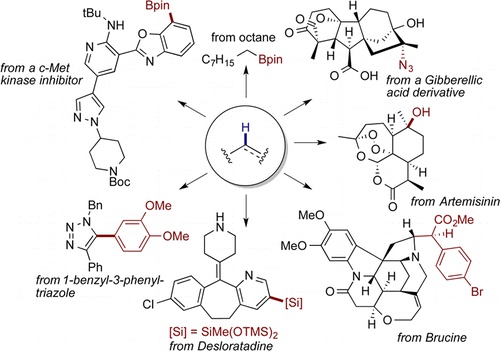Undirected, Homogeneous C−H Bond Functionalization: Challenges and Opportunities

The functionalization of C–H bonds has created new approaches to preparing organic molecules by enabling new strategic “disconnections” during the planning of a synthetic route. Such functionalizations also have created the ability to derivatize complex molecules by modifying one or more of the many C–H bonds. For these reasons, researchers are developing new types of functionalization reactions of C–H bonds and new applications of these processes. These C–H bond functionalization reactions can be divided into two general classes: those directed by coordination to an existing functional group prior to the cleavage of the C–H bond (directed) and those occurring without coordination prior to cleavage of the C–H bond (undirected). The undirected functionalizations of C–H bonds are much less common and more challenging to develop than the directed reactions. This outlook will focus on undirected C–H bond functionalization, as well as related reactions that occur by a noncovalent association of the catalyst prior to C–H bond cleavage. The inherent challenges of conducting undirected functionalizations of C–H bonds and the methods for undirected functionalization that are being developed will be presented, along with the factors that govern selectivity in these reactions. Finally, this outlook discusses future directions for research on undirected C–H functionalization, with an emphasis on the limitations that must be overcome if this type of methodology is to become widely used in academia and in industry.
Read more on publisher's site.